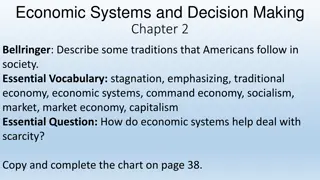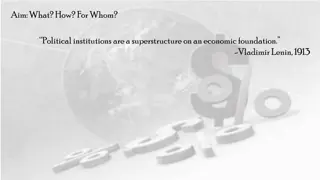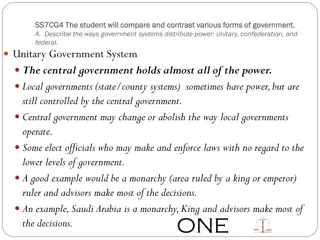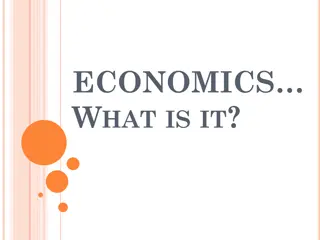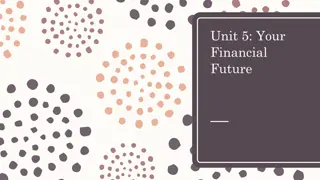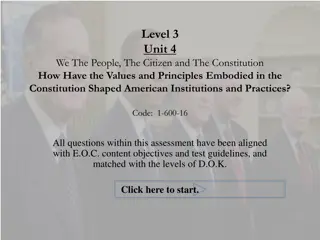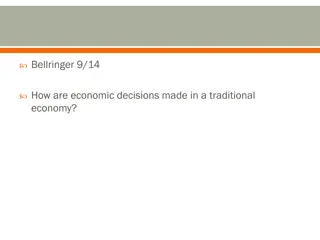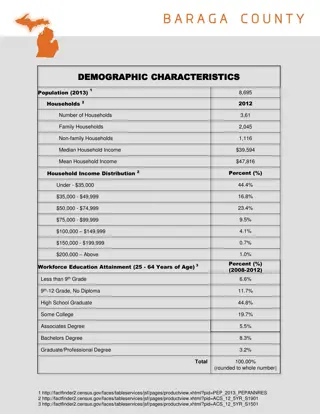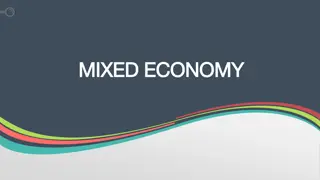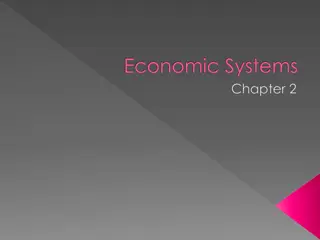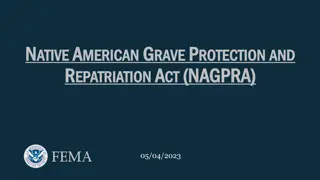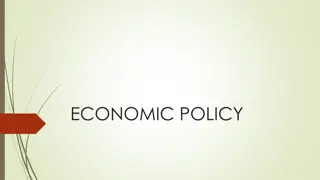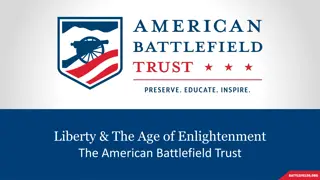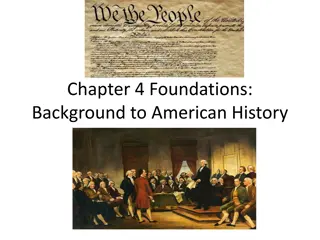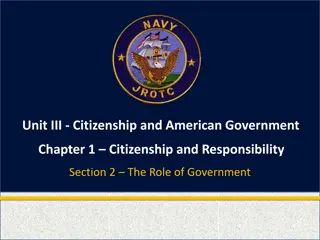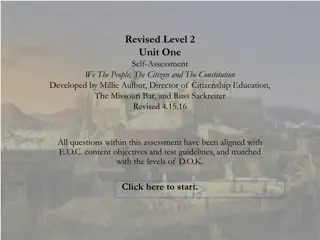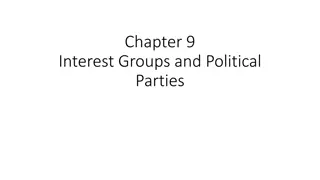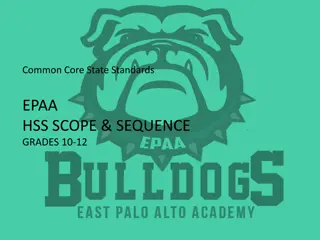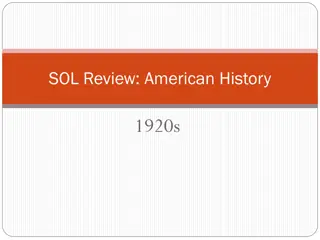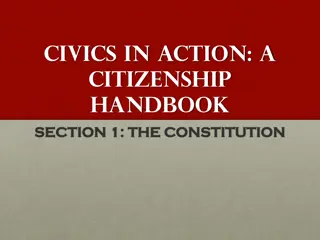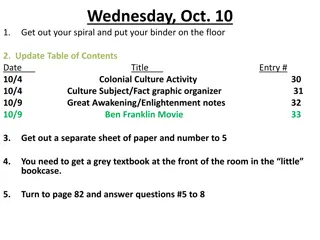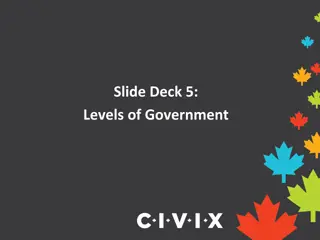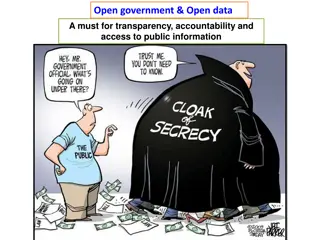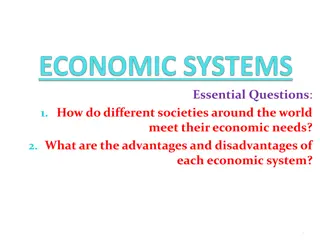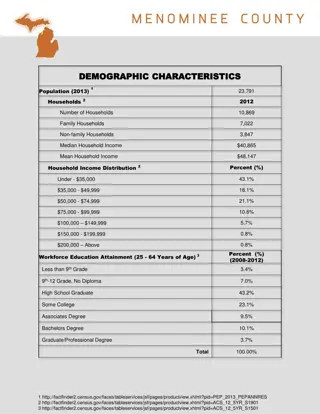Understanding American Government and Economic Systems
Explore the nuances of the American government and economic systems through activities, discussions, and assessments. Delve into the differences between the House and Senate, analyze political cartoons, and ponder essential questions about the functioning and relevance of the U.S. government. Gain insights into the powers and roles of different branches of government, while addressing enduring understandings and essential questions to deepen your comprehension of American governance.
Download Presentation

Please find below an Image/Link to download the presentation.
The content on the website is provided AS IS for your information and personal use only. It may not be sold, licensed, or shared on other websites without obtaining consent from the author. Download presentation by click this link. If you encounter any issues during the download, it is possible that the publisher has removed the file from their server.
E N D
Presentation Transcript
WELCOME TO AMERICAN GOVERNMENT AND ECONOMIC SYSTEMS!
AGENDA: MONDAY, OCT. 12, 2015 Opening Activity: Political Cartoons About the House and Senate (15 min.) Notes/Discussion: Differences Between the House and Senate/The Checking Powers of Congress (15 min.) Fishbowl Debates Wrap-Up (15 min.) Writing Assessment: Issues Facing Congress (30 min.) Closure: A Bill That You Would Like to See Passed into Law (15 min.)
LEARNING OBJECTIVE Students will be able explain the differences between the House and Senate and evaluate issues facing our current Congress.
ENDURING UNDERSTANDINGS Students will understand that the powers of the U.S. government have expanded and evolved over time. the different branches of government have interdependent and overlapping roles.
ESSENTIAL QUESTIONS How are fundamental American principles still relevant today? Does our government function as it was intended?
OPENING ACTIVITY HOUSE OF REPRESENTATIVES CARTOON 1. What is the contrast being made between the first and second frames of the cartoon? 2. Describe the expressions on the hiding people s faces. 3. Who elects representatives? How does this fact contribute to the irony expressed in this cartoon?
OPENING ACTIVITY SENATE CARTOON 1. Why is the cartoonist comparing the knowledge of a television show to knowledge of one s representatives in Congress? 2. What is the man implying in the second frame of the cartoon? 3. Write a quote that one of the men could be saying in the last frame.
DIFFERENCES BETWEEN THE HOUSE AND SENATE
HOUSE SENATE Larger body (435 members) Smaller body (100 members) Shorter term (2 years) Longer term (6 years) Smaller constituencies Larger constituencies Younger membership Older membership
HOUSE SENATE Less prestige Lower visibility in the news media Strict rules, limited debate No power over treaties and presidential appointments More prestige Higher visibility in the news media Flexible rules, nearly unlimited debate Approves or rejects treaties and presidential appointments
LEGISLATIVE CHECKS ON EXECUTIVE BRANCH override presidential vetoes (two thirds of Congress must agree) approve or reject presidential appointments and treaties impeach and try the president
LEGISLATIVE CHECKS ON JUDICIAL BRANCH approve or reject nominations of federal judges create lower courts remove judges through impeachment
Writing Assessment Write an individual, in class essay providing brief background about the four debate topics. You must take a position on each topic and be able to cite evidence from the debates in order to support your positions. You will be able to use your graphic organizer.
Committee Debate Topics 1. Should There Be Prosecutions for Torture in the CIA s Interrogation Program? 2. Is Obamacare Working? 3. Does Obama Have the Right Strategy for the Islamic State? 4. Should the Government Fund Universal Pre-K and Community College?
CLOSURE ACTIVITY A BILL THAT YOU WOULD LIKE TO SEE PASSED INTO LAW Think of a bill that you would like to see passed into law to improve the lives of American citizens across the country. Give your bill a catchy title, and write a two- or three-sentence description of its main features.
Create a mental flowchart of the steps you think it would take to get your bill passed into law, from beginning to end. Include as many steps as you think are necessary, with a minimum of three. (A mental flowchart is a representation of what you think is true. There are no wrong answers as long as you rely only on what is in your head.) After you complete your mental flowchart, star the step that you think is particularly important. Then briefly explain why you think that step is so important.
CLOSURE ACTIVITY VISUAL INFORMATION ABOUT CONGRESS Map: Representation in Congress, p. 263: How does the distribution of Senate seats among the states illustrate the principle of federalism? Map: Congressional Apportionment, 2003- 2013, p. 268: What general trend in population growth around the country does this map show?
Time Line: Gains and Losses in Off-Year Elections, p. 269: In which two election years did the President s party lose the most seats in the House? Map: 1991 Oklahoma Congressional Districts/Oklahoma Congressional Districts Today, p. 270: Why does the redrawing of district lines regularly produce sharp political conflicts in a state?
Table: Major Differences Between the House and Senate, p. 272: Why do House members debate most bills in committees before bringing them to the House floor? Diagram: How to Write to Your Lawmakers, p. 276: Why is it important to write while a bill is still in committee? Graph: Profile of the 110thCongress, p. 280: How does racial and ethnic diversity differ between the House and the Senate?
HOMEWORK Define Unit II Key Terms: Executive Branch.



